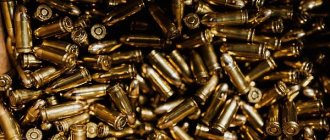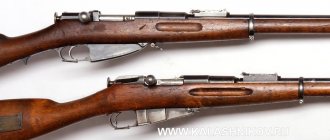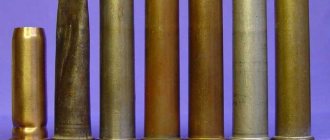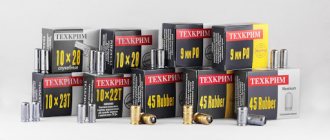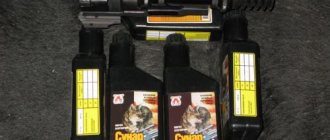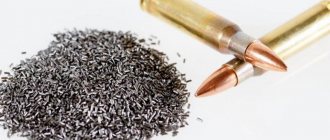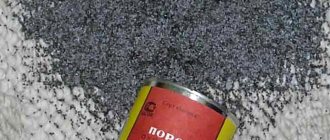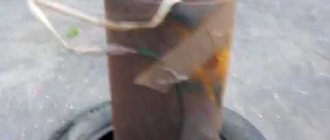- May 26, 2019
- Weapons and ammunition
- Ivan Gresko
According to experts, the effectiveness of hunting directly depends on both shooting skills and the quality of the ammunition used. Those who are planning to take self-loaded cartridges with them when fishing should wisely select hunting powder for them. On the modern arms market it is presented in a large assortment. Despite the fact that the intended purpose of each brand is common, the characteristics of hunting powder may be different. It's not surprising that a newbie can get confused. An overview of hunting powder varieties is contained in this article.
Acquaintance
Previously, hunting enthusiasts had only black powder at their disposal. As a result of firing such cartridges, a very strong roar was obtained, and a large amount of fire and smoke was generated. This had a negative impact on the condition of the trunks. As a result, hunters often had to clean them of carbon deposits. Judging by the reviews, it was impossible to do this without special alkaline solutions. Some craftsmen used washing powder for cleaning, namely, they poured the solution into the barrel and left it there for a while. The situation has improved significantly with the advent of smokeless varieties, which will be discussed later.
Reviews of Italian gunpowder
Reviews about A1 gunpowder from hunters are mostly positive. Shooters emphasize that this product does not contaminate the gun barrel and does not leave a strong residue after several shots. The relatively low price and stable quality allowed the Italian manufacturer Nobel Sport to quickly conquer a niche in the domestic market.
A1 gunpowder in “Vetter” and other gun stores is in stable demand, which once again confirms the truthful reviews from shooters about the high quality, reliability and adaptation of this incendiary substance in our difficult weather conditions.
"Sunar"
It is a fast-burning variety. Due to the fact that it has more complete energy capabilities, during the weighing process, experts recommend taking less Sunar gunpowder. This variety, compared to others, is more powerful. In addition, if we compare this brand with Sokol gunpowder, then Sunar is denser. The dispersion of the sample does not exceed 0.05 g. Due to the fact that special scales are needed when loading cartridges, many hunters may have difficulties in this matter. Judging by numerous reviews, this gunpowder burns in the barrel channel. For this reason, the sound of the shot is relatively quiet, there is no recoil, and the flame is practically not knocked out of the barrel. According to experienced hunters, a shot can be considered high-quality if at night the length of the knocked-out flame does not exceed 150 mm. During the day it should not be visible at all. Gunpowder "Sunar" is produced in Tambov. It is based on pyroxylin components. According to the owners, with such products it is possible to equip cartridges for smoothbore and hunting rifles. On average, the pressure is in the range of 630-680 bar. The fired projectile flies at a speed of 320 m/s.
TECHNOLOGY, ENGINEERING, INNOVATION
Hydrogen peroxide has been widely used and is now used in rocket technology. The famous Aggregat 4, better known as V2, used hydrogen peroxide to drive turbopumps that pumped fuel and oxidizer into the combustion chamber. Hydrogen peroxide is used in the same quality in many modern rockets. The same substance is also used for mortar launch of missiles, including in underwater launch systems. Also, the German Me-163 jet aircraft used concentrated hydrogen peroxide (T-Stoff) as an oxidizing agent.
Chemists were well aware of the ability of hydrogen peroxide, especially in high concentrations, to decompose instantly, with an explosion and the release of large amounts of water vapor and oxygen heated to high temperatures (the decomposition reaction occurs with the release of heat). 80% hydrogen peroxide produced a vapor-gas mixture with a temperature of about 500 degrees. A liter of such hydrogen peroxide upon decomposition gives, according to various sources, from 5000 to 7000 liters of steam gas. For comparison, a kilogram of gunpowder produces 970 liters of gases.
Such properties fully allow hydrogen peroxide to act as a liquid propellant. If the steam gas from the decomposition of hydrogen peroxide is capable of rotating turbines and pushing ballistic missiles out of the launch silo, then it is even more capable of pushing a bullet or shell out of the barrel. This would provide major advantages. For example, the possibility of significant miniaturization of the cartridge. However, as is well known to anyone knowledgeable in the history of firearms, hydrogen peroxide has never been used or even proposed as a propellant. There were reasons for this, of course.
Firstly, hydrogen peroxide, especially concentrated, instantly decomposes explosively upon contact with most metals: iron, copper, lead, zinc, nickel, chromium, manganese. Therefore, any contact with the bullet or cartridge case is impossible. For example, trying to pour hydrogen peroxide into a cartridge case would lead to an explosion. Safe storage of hydrogen peroxide during the birth and most rapid development of cartridge technology was possible only in glass vessels, which posed insurmountable technological barriers.
Secondly, hydrogen peroxide, even in the absence of catalysts, slowly decomposes, turning into water. The average rate of decomposition of the substance is about 1% per month, so the shelf life of hermetically sealed hydrogen peroxide solutions does not exceed two years. It was not very convenient for ammunition; they could not be produced and stored for decades, like conventional cartridges.
The use of a new propellant such as hydrogen peroxide would require such serious changes in the production, storage and use of firearms and ammunition that such experiments were not even decided upon.
However, why not try? Several very compelling arguments can be made in favor of hydrogen peroxide, albeit of a somewhat unusual nature, mostly military-economic. If the arguments are best considered together with the proposed design of a cartridge with a charge of hydrogen peroxide, so as not to repeat it twice.
First. Hydrogen peroxide (and some mixtures based on it) is a propellant, produced completely without the participation of nitric acid, this indispensable reagent for the production of all types of gunpowder and explosives used. In the military economy, mastering the production of at least part of the propellant or explosives without the use of nitric acid means the possibility of increasing the production of ammunition. In addition, as the experience of the same Germany during the Second World War shows, all nitric acid and all ammonium nitrate (in Germany it was used both as an explosive and as a component of artillery gunpowder) cannot be used only for ammunition. Something else must be left for agriculture, because bread is no less important for war than gunpowder and explosives.
And the production of nitrogen compounds is a huge plant, vulnerable to air or missile attack. In the photo is Togliattiazot, Russia's largest ammonia producer.
Hydrogen peroxide is produced mainly by electrolysis of concentrated sulfuric acid, and subsequent dissolution of the resulting persulfuric acid in water. From the resulting mixture of sulfuric acid and hydrogen peroxide, 30% hydrogen peroxide (perhydrol) can be obtained by distillation, which can be purified from water using diethyl ether. Sulfuric acid, water and ethyl alcohol (which is used for the production of ether) are all the components for the production of hydrogen peroxide. Organizing the production of these components is much simpler than the production of nitric acid or ammonium nitrate.
Here is an example of a hydrogen peroxide production plant from the Solvay company with a capacity of up to 15 thousand tons per year. A relatively compact installation that can be hidden in a bunker or some other underground shelter.
Concentrated hydrogen peroxide is quite dangerous, but rocket scientists have long developed a mixture that is explosion-proof under normal conditions, consisting of a 50% aqueous solution of hydrogen peroxide with the addition of 8% ethyl alcohol. It decomposes only with the addition of a catalyst, and produces steam gas at a higher temperature - up to 800 degrees, with corresponding pressure.
Second. Apparently, loading a cartridge with hydrogen peroxide will require much less than gunpowder. It can be assumed for rough calculations that this substance produces on average 4 times more gases than gunpowder, that is, to obtain the same volume of gases, the volume of hydrogen peroxide is required to be only 25% of the volume of gunpowder. This is a very conservative estimate, since I could not find more accurate data, and the data available in the literature vary greatly. It is better not to get carried away with more accurate calculations and tests.
Let's take the 9x19 Luger cartridge. The internal volume of the cartridge case occupied by gunpowder is 0.57 cubic meters. cm (calculated from geometric dimensions).
Geometric dimensions of the 9x19 Luger cartridge.
25% of this volume will be 0.14 cubic meters. cm. If we shortened the cartridge case to such a volume occupied by the propellant, then the length of the cartridge case would be reduced from 19.1 to 12.6 mm, and the length of the entire cartridge would be reduced from 29.7 to 22.8 mm.
But here it should be noted that with a cartridge diameter of 9 mm, the volume for the propellant charge is 0.14 cubic meters. cm requires a height of only 2.1 mm. And the question arises: do we even need a sleeve here? The bullet length in this cartridge is 15.5 mm. If the bullet is increased in length by 3-4 mm, and a cavity is made on the back side for the propellant charge, then the cartridge case as such can be abandoned. The ballistic characteristics of the bullet will, of course, change, but it’s unlikely to change dramatically.
This scheme is not suitable for a powder charge: the bullet-case is quite long and has mediocre ballistic characteristics. But if the propellant charge turns out to be only a fifth of the powder charge, then such a cartridge in the form of a bullet-case turns out to be quite possible.
There is no need to say how important it is to reduce the weight of ammunition and reduce its size. Such a radical reduction in the size of the same pistol cartridge that it shrinks, in fact, to the size of a slightly enlarged bullet, creates great prospects for the development of weapons. Reducing the size and weight of the cartridge by almost half means the possibility of increasing the magazine. For example, the PP 2000, instead of magazines for 20 and 44 rounds, can receive magazines for 40 and 80 rounds. The same can be said not only about the 9x19 cartridge, but also about all other small arms cartridges.
You can also remember about the VAG-73 V.A. pistol. Gerasimov for caseless cartridges.
Third. Modern containers for storing hydrogen peroxide and mixtures based on it are made of polymers: polystyrene, polyethylene, polyvinyl chloride. These materials not only provide safe storage, but also make it possible to create a capsule for loading ammunition that is inserted into the cavity of the bullet. The capsule is sealed, equipped with a capsule. The capsule in this case is a relative concept. Hydrogen peroxide does not need to be ignited like gunpowder, but rather a very small amount of catalyst must be added to it. Essentially, the “primer” in this case is a small nest in a plastic capsule containing propellant, where the catalyst is placed. The strike of the striker pierces this socket, its bottom, separating it from the propellant, and presses the catalyst inside the capsule. Next, the decomposition of hydrogen peroxide occurs, the rapid release of steam gas and a shot.
The capsule is best made from polystyrene. It is quite durable under normal conditions, but when heated strongly, above 300 degrees, it decomposes into a monomer - styrene, which, in turn, when mixed with oxygen present in the steam gas, burns well and even explodes. So the capsule will simply disappear the moment it is fired.
A cartridge with hydrogen peroxide in a section. 1 - bullet. 2 - hydrogen peroxide. 3 - polystyrene capsule. 4 — “capsule” with a decomposition catalyst.
A polystyrene capsule is produced incomparably lighter and simpler than a sleeve. It is easy to stamp hundreds and thousands of pieces on a heat press in one pass. Numerous (more than a hundred!) operations for the manufacture of a metal cartridge case are completely eliminated, and the technological equipment for producing a shot is dramatically simplified. The relative simplicity of production means the possibility of mass production and its expansion if necessary.
However, it should be noted that cartridges filled with hydrogen peroxide will need to be manufactured immediately before use, with a maximum shelf life of 3-4 months. The longer such a cartridge is in storage, the more difficult it is to guarantee that it will work. But this circumstance can be circumvented in the following simple way: equip with fresh hydrogen peroxide or a mixture based on it only those batches of cartridges that will immediately go into use. It will be necessary to change the very sequence of ammunition manufacturing. If in conventional cartridge production the cartridge is loaded with gunpowder before mounting the bullet, then in the case of hydrogen peroxide the final stage of ammunition production will consist of pouring it into the already assembled ammunition. Hydrogen peroxide can be poured into the capsule already installed in the bullet using a thin needle (aluminum or stainless steel - materials acceptable for working with this substance), followed by sealing the hole.
Therefore, in peacetime, it is possible to prepare a sufficient mobilization supply of “dry” cartridges, so that in case of war, quickly launch the production of fresh hydrogen peroxide and accelerate the equipment of these supplies.
However, some of these cartridges can be kept in warehouses and fully loaded. After the expiration date, the hydrogen peroxide in them can be replaced without disassembling the ammunition: using a thin needle, first pump out the already unusable propellant mixture, and then pour in a fresh one.
In general, if you decide to make major changes related to the design of the cartridge, the design of the weapon, as well as the technology of cartridge production, then you can introduce a new propellant and obtain a whole range of military, economic and tactical advantages associated with its use. These advantages, as can be seen, will be very far-reaching and will affect all aspects of preparation for war.
About equipment
This brand is very dependent on the components of the ammunition. If they are combined unsuccessfully, for example, the hunter used hard “Zhevelo-M”, then during the shot the pressure inside the cartridge case will rise, resulting in an increase in recoil. In this case, the scree will have low accuracy. A similar effect is observed with rigid container wads embedded in the shape of an asterisk. It is more advisable to use soft felt wads “Zhevelo-N”, rolled by twisting. Thus, replacing primers will affect the pressure inside the barrel channel, and therefore the accuracy of the fire. The pressure indicator increases to 250 kg/cm2.
What is good about A1 gunpowder?
Many hunters who load their own cartridges for hunting are wondering what kind of A1 gunpowder is this? Gunpowder from Italy has been produced for several years and is considered a fairly high-quality product. It burns in the barrel without leaving much residue, and the shot has a good initial velocity when fired. Low muzzle energy results in low recoil, which has a positive effect on accuracy and target firing range.
Hunting cartridges loaded with Vectan A1 gunpowder have high ballistic characteristics. Gunpowder performs its function perfectly in harsh Russian conditions.
About fast-burning gunpowder
Judging by numerous consumer reviews, this variety is the leader in the rating of gunpowder for hunting cartridges. To make it burn faster, the manufacturer increased the porosity of the grains and additionally added nitroglycerin (20%) to its composition. The fast-burning Sunar is mainly used in skeet shooting training. It is used with shot charges, the weight of which varies from 24 to 28 g. According to experts, this variety is of little use for hunting. These products are marked SVS and SV.
Historical excursion
Ancient world
The history of the creation of gunpowder is not reliably known. According to some sources, it was used in ancient India around the 15th century BC. According to other sources, this explosive was developed by the Chinese in the 1st century AD. Moreover, it was originally intended not for military purposes, but for medical purposes. A mixture of saltpeter and honey was set on fire, producing “medicinal” smoke.
However, the generally accepted opinion is that gunpowder was invented later. Presumably it was first invented by the Chinese alchemist Sun Simiao in the 7th century. As a result of mixing saltpeter, sulfur and locus tree bark and heating the mixture in a crucible, an unusually powerful flash of flame occurred. This fact led the alchemist to think about the possibility of using the substance for pyrotechnic purposes.
Gunpowder began to be used to organize fireworks. This material was poured into bamboo and then set on fire, pointing the stems into the sky. There are also references to the use of gunpowder for military purposes: bombs were made with its help. Bombing was carried out using a catapult.
Appearance in Europe
Over time, the secret of gunpowder production spread throughout the world. First, the Indians mastered its production, then the Arabs, and finally the technology reached Europe. Moreover, the Europeans rethought the very idea of using gunpowder, starting to use the power of gas to launch projectiles.
There are other theories regarding the appearance of gunpowder in Europe. According to them, the method of its manufacture was invented by the Europeans themselves. According to some reports, the championship belongs to the Englishman Roger Bacon; he invented the first gunpowder known in Europe and mentioned this substance in his scientific work of 1242. Be that as it may, gunpowder was not actively used in those days.
In the 14th century, the second “invention” of gunpowder occurred. This time it was associated with the name of the famous alchemist - Berthold Schwartz. The discovery took place, as often happens, by chance. When mechanically applied to a mixture of saltpeter, coal and sulfur, it ignited. It is believed that Schwartz first introduced the idea of using gunpowder in artillery.
In 1346, the British first used gunpowder artillery charges in battle against the French. A charge was placed in the cannon, the fuse protruded outward, and there was a core (stone or metal) in the barrel. The lit fuse transferred the fire to the gunpowder, causing the gases to push the cannonball out. The use of such charges in artillery radically changed the nature of warfare.
At the end of the 19th century, the French chemist Viel developed smokeless pyroxylin gunpowder. In 1888, Alfred Nobel created a recipe for ballistic gunpowder. A year later, cordite gunpowder was invented in England.
Gunpowder in Russia
In 1887–1891 Russian chemist-inventor Mendeleev developed pyrocollodion gunpowder. Mikhailo Lomonosov also contributed to the technology even earlier.
The production of powder substances began in the 15th century, when the first enterprises of this profile opened in Russia. The industry developed especially rapidly under Peter I, who founded three large factories in St. Petersburg and its environs.
Modern production
Currently, gunpowder is still widely used in various fields, primarily military. The available varieties are usually divided into the following categories according to their chemical composition:
- Mixed species. These include smoky (aka black) gunpowder.
- Aluminum. A variety of mixed compositions.
- Nitrocellulose (smokeless) varieties. The group includes pyroxylin, ballistite and cordite gunpowder.
About gunpowder with an average burning rate
Unlike products of the previous category, this gunpowder has optimal characteristics, namely, it burns much more slowly. The manufacturer puts the letter designations on its product - N and SF. Designed for loading shotgun ammunition up to 36g. Judging by the reviews, cartridges loaded with this gunpowder have a soft and smooth action. If shooting is done in winter or there is high humidity in the air, then the gas pressure will decrease by an average of 30%, and therefore the initial speed by 15%.
How is ammunition loaded?
In hunting rifles of caliber No. 12, “Sunar-32” with a load of 1.9 g is used for a charge weighing 32 g. “Sunar-35” is used in cartridges with a load of 2.1 g with a charge of 35 g. For the brand “Sunar-42” » 2.1 g of charge will require 42 g. In 16-caliber rifle units, these figures are somewhat different. For example, for a cartridge with a 1.7 g charge, 30 g is provided. If the Sunar-42 load is 2.1 g, then you need to take 32 g. In 20-caliber hunting rifles, cartridges equipped with Sunar-35 are used and 42". In the first case, the weight of the charge should not exceed 35 g, in the second - 28 g.
Gunpowder "Bars"
This product is in second place in the ranking and is intended for shotguns of 20, 16 and 12 gauges. It is smokeless powder. The grains have a spherical shape, due to which they occupy less volume when equipped. Gunpowder is made from nitroglycerin. Compared to pyroxylin analogs, fewer gases are released when it burns. If we compare it with Sokol gunpowder, then this variety is almost twice as dense. Due to the non-standard density, it is inconvenient to use measuring containers when equipping. If “Bars” is used in guns below 12 gauge, then the rifle unit will become unusable. Due to the fact that the composition of this grade is represented by a nitroglycerin mixture, during combustion a higher temperature is formed than in pyroxylin powders. For this reason, Bars reduces the service life of guns.
Features of the use of smokeless powders “Sunar” and “Bars”.
“Falcon” gunpowder is well known to hunters; as for “Sunar” and “Bars” gunpowder, a few additional words should be said about them. When fired, “Sunar” gunpowder gives performance close to those of “Falcon”, but has a number of advantages. With almost identical ballistic characteristics of the shot, it allows the use of slightly (10%) less mass in the cartridge charge, and also gives less recoil.
You should be especially careful when using Bars spherical gunpowder, since its density is significantly (1.8-1.9 times) greater than that of Sokol. This powder must be weighed when loading each cartridge, since the slightest error in volumetric measurement can lead to an increase in pressure in the chamber and bore when firing. In some cases, when firing cartridges equipped with Bars, its incomplete burnout is observed. Inexperienced hunters should not use this gunpowder.
There are quite a large number of gunpowders designed for use in cartridges for rifled weapons. Outwardly, they may look like smokeless hunting powder, but when burned they produce pressure that conventional hunting rifle barrels are not designed to withstand. Therefore, under no circumstances should you load cartridges with unfamiliar smokeless powder.
Based on materials from the book Hunter's Encyclopedia. Rudenko F.A., Semashko V.Yu., Cherenkov S.E., Matyunin M.M.
What do experienced hunters recommend?
For beginners who purchased Bars and decided to load the cartridges themselves, experts recommend starting with zeroing with minimal charges. For example, it is better to load 12-gauge shotguns with ammunition with a powder charge of 2.1 g. For 16-gauge, 1.7-gram charges are suitable. In a 20-caliber hunting rifle, it is advisable to reduce the powder weight to 1.4 g. After the cartridge case is equipped with a powder charge, a 3-mm cardboard wad spacer should be placed on top. To prevent strong pressure from forming inside the barrel channel as a result of the shot, the wad should not be pressed too hard against the powder charge. Before seating it, experienced shooters thoroughly shake the cartridge case. To do this, it will be enough to lightly tap on it with your fingernail.
Selection of powder weight depending on caliber
To properly load hunting cartridges with A1 gunpowder, you can use the reference table below.
| What metal is the shot cast from? | Lead | Lead | Lead | Lead |
| Chuck size | 12/70 | 12/70 | 16/17 | 20/70 |
| Required shot weight, in grams | 32 | 32 | 32 | 28 |
| Brand of capsule | CX2000 | M686 | CX1000 | M686 |
| Required weight of gunpowder, in grams | 1,58 | 1,65 | 1,35 | 1,25 |
| Approximate charge speed at a distance of 2.5 meters from the muzzle of the barrel, in m/s | 392 | 398 | 365 | 365 |
| Maximum pressure of powder gases during combustion of powder, in bars | 600 | 640 | 680 | 750 |
This gunpowder can be used as a charge in any caliber of smoothbore shotguns. However, it is worth remembering that the weight of the powder charge also changes for different models of primers.
"Falcon"
This variety is considered the oldest Russian smokeless powder. In the ranking in third position. Hunters have been using it since 1937. According to experts, the Falcon is suitable for a wide variety of shooting units. The exception is hunting rifles with fixed barrels. The grains are rectangular in shape. Hunting powder is produced based on nitrocellulose. This brand of gunpowder has a stable chemical composition and is not prone to sticking. Especially for this purpose, the manufacturer subjects the powder plates to graphitization procedures. In addition, this procedure prevents electrification of particles. The 1.3 cm thick plates can have different lengths. On average, it varies between 1.2-1.7 mm. “Falcon” is presented in two varieties: highest and first. Sold in cans of 250 g. Gunpowder is also placed in galvanized boxes weighing 50 kg. Judging by the reviews, products can be stored in a jar for up to 6 years, in a box - up to 25.
Negative qualities of smokeless powder.
1. The shelf life of smokeless powder is much shorter than that of smoked powder. For example, the guaranteed shelf life of “Falcon” is 6 years. 2. Loading cartridges with smokeless powder requires much more care than with smoky powder. In some cases, even small deviations in the size of the powder charge can lead to negative consequences. 3. Substances contained in smokeless powder have an oxidizing effect on the metal of the barrel bore. 4. Smokeless powder reacts to sudden changes in temperature. With its repeated increase and decrease, it often loses its properties. 5. Normally, without the use of additional devices, it is of little use in combination with a weak capsule.
When using smokeless powder, it should be remembered that during long-term storage, volatile substances erode from it. The remaining nitrocellulose burns in the shell with an explosion that can destroy the chamber. Spoiled gunpowder is recognized by its sour smell.
Products from Nobel Sport
Relatively recently, the French company Nobel Sport began producing Drago (Vectan) hunting powder for smoothbore gun owners. Designed for loading 12/70 ammunition. Used with Cheddite (CX2000) capsules. With a shot load of 32 to 34 g, the cartridge must contain a powder charge weighing from 1.58 to 1.63 g. Experts advise using Drago with 12N22 container wads. The loaded cartridge has a length of 5.8 cm. Gunpowder is supplied to the market in packages weighing 500 g. To become the owner of this product, you will have to shell out 1,200 rubles.
Blank cartridge for SKS
You already know what cartridge is used for hunting. However, in some cases it becomes necessary to use a blank cartridge. Also, such information will allow you to compare these technical characteristics with live ammunition in order to better understand what exactly affects the initial speed of the bullet and its destructive power. So, we present to your attention the technical characteristics of a blank cartridge:
- free volume of the sleeve - 3 cubic centimeters;
- the volume of the compressed sleeve is 2 cubic centimeters;
- powder charge weight – from 0.73 to 0.77 grams;
- cartridge length - from 48.2 to 48.8 millimeters;
- type of gunpowder – pyroxylin, smokeless;
- cartridge weight – from 8.12 to 8.30 grams;
- index – GRAU 57-Х-231;
- brand of gunpowder - P-125.
Similar cartridges can also be found on the open market, but in smaller quantities than combat ones. Now let's talk in more detail about how much ammunition fits in the SKS magazine.
"Irbis"
This variety is produced by employees of the Kazan State Powder Plant. The line is represented by the Irbis brands No. 24, 32 and 35. There is also the Irbis-M brand, which, according to experts, they began to create specifically for use at sub-zero temperatures. Today this brand is practically not found. Those who decide to independently load a cartridge with Irbis gunpowder should put 1.7 g of gunpowder and 35 g of shot into the case. In this case, you need to use a wad container, and at the end the case itself is rolled using the star method. A fired lead projectile covers a distance of 380 m per second.
Half charges
To shoot small animals, such as squirrels, with a 12-gauge weapon, the best solution is to use reduced charges of gunpowder and shot. Most often among hunters they are called half-charges. The main task for those who are planning to hunt small animals will be to reduce the mass of the shot, but in such a way that the powder charge burns completely, and the wad that flies out behind the shot quickly slows down in flight, preventing the shot shell from breaking. Therefore, cartridges intended for such purposes are equipped in a special way.
During this process, cardboard spacers are placed on the gunpowder. Their height should be 4 mm. Also, a felted wad is placed on the gunpowder, which is cut lengthwise into 4 parts, but not completely. The cut part is placed on top. The additional wad is also cut. The primers use Zhevelo-M because they cause the gunpowder to burn along its entire length and as quickly as possible. Therefore, the gunpowder has time to burn completely in the barrel.
The gasket on the shot is secured with glue. The principle here is the same as in the manufacture of metal sleeves.
Sighting of a 12-gauge weapon begins at a distance of 20 meters with a load of Sokol gunpowder of 1.1-1.2 g, and shot - 15-16 g. By changing the charge indicators, the best weight options for both gunpowder and shot are selected. This is done for each barrel separately, if we are talking about a double-barreled shotgun.
"Firework"
According to experts, the gunpowder plant in the city of Tambov also produces the Salyut line. However, compared to “Sunar”, this variety has slightly worse characteristics. When equipping, it is of great importance which components to use. At this stage, the master needs to be as careful as possible. For Salyut brand gunpowder, it is better to use the KV-21 and Zhevelo primer igniters. If the cartridge is properly equipped, then ignition and reliable combustion will be ensured. In order for increased pressure to form inside the liner, they need to be wadded with soft, but at the same time quite elastic products.
Experts' opinion
Today, there is a debate surrounding hunting powder brands regarding their ease of use and quality. Judging by numerous consumer reviews, we can conclude that the Sunar is more convenient for horizontal shooting. Those who decide to acquire the Sokol brand are advised to pay attention to the shape of the grains. They must be plate-like. This was undertaken by the manufacturer specifically to ensure better combustion of gunpowder. This grade is undesirable for rifle units with gas exhaust mechanisms. The fact is that such a gun will very quickly become clogged with unburnt particles from the Falcon, as a result of which the weapon will have difficulty reloading. "Leopard", according to hunters, is quite good, since it provides a small return. In addition, as a result of its combustion, almost no fire or smoke is generated.
